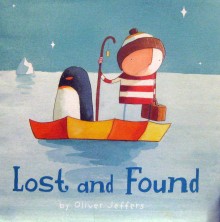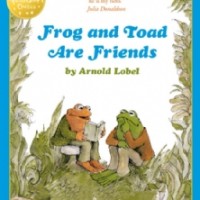Standing tall with flippers tucked neatly to his side, a tiny penguin delivers himself to the doorstep of a young boy. Even the smallest of penguins are not afraid of humans, having no natural land predators in their Antarctic homeland, and this little black-and-white customer is no exception, following the boy everywhere he goes.
Making it his task to help the penguin – who is obviously lost – find his way home, the boy sets off on a journey which takes them from the local Lost and Found Office all the way across the seas to the South Pole. After reaching the Pole and saying their goodbyes, the boy realises he has made a big mistake: the penguin wasn’t lost, he was just lonely.
The book’s underlying message is about understanding across divides – be they cultural, geographical or even species – and realising that sometimes what you think might be best for someone isn’t what they need at all. And in fact, when you thought you were helping someone by trying to fix something, perhaps all they really needed was a friend.
Lost and Found is a wonderful reminder that just when you think all is lost, around the corner you may find the most precious thing of all…
It is also a wonderful message for children that reveals that we don’t need to be able to communicate in the conventional way to get to know someone, or something; if we simply show kindness and offer friendship to whoever turns up on our doorstep we might just be starting a life-long friendship.
Jeffer’s distinctive illustrative style and sweet, handwritten typography shies away from bold, bright primary colours. His palette is understated, with delicious organic, pastel hues that lend themselves particularly well to the blissful, washed-watercolour skies that dominate so many of his books’ pages, and out-of-proportion characters’ are perfectly suited to a child’s mis-proportionate perspective – the little leading man barely supporting his enormous head with his thin stick legs, the penguin a small black-and-white blob with dots for eyes and a tiny beak.
Playing with size and scale, Jeffers’ images convey the drama in each moment. As the pair arrive at the harbour to find a boat for the journey, they stand dwarfed in front of a giant red ship that more than dominates the entire page; later, the stormy Atlantic waves tower over their tiny rowing boat, depicting the daunting nature of this desperate journey. But beyond the major dramas, Jeffer’s has also included witty flourishes that insure its lifespan for multiple reads and explorations: the silhouettes of large whales swim gigantically beneath their boat; the penguin and a seagull have an identity stand-off, looking quizzically at each other, their beaks identical. Plenty to keep adults and children entertained from toddlerhood to school-age.
Illustrator Profile Born in Australia in 1977, Oliver Jeffers grew up in Northern Ireland. He now lives in Brooklyn, New York and has won countless illustration awards, including the CBI Bisto Award for How to Catch a Star. Although he focuses primarily on children’s books, his work has been exhibited at the National Portrait Gallery in London and a collection of his illustrations, Neither Here nor There, was published by art and design powerhouse Gestalten in 2012. The boy and penguin from Lost and Found return in the sequel, Up and Down, published in 2011. Thus far (July) in 2014 he has won four new awards, three for his work with The Day The Crayons Quit, as well as The Hay Festival of Literature and the Arts 2014 Inaugural Hay Medal for an Outstanding Body of Work.





